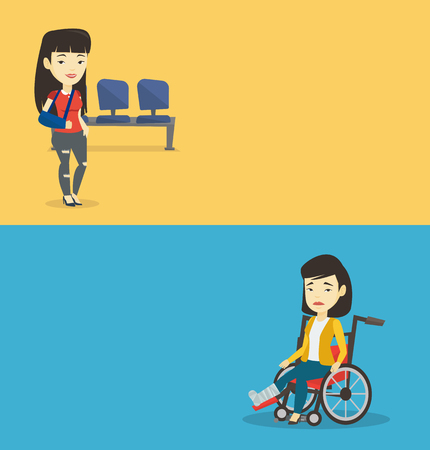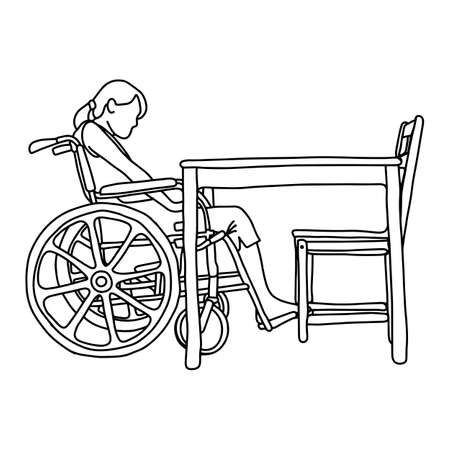Overview of Community Rehabilitation in the UK
Community rehabilitation is a cornerstone of the UK’s approach to healthcare, embodying both its commitment to holistic care and its focus on supporting people closer to home. At its heart, community rehabilitation involves a range of therapeutic and support services designed to help individuals regain or maintain independence after illness, injury, or long-term health challenges. Unlike acute hospital-based care, these services are delivered within local communities—whether that’s in patients’ homes, residential facilities, or outpatient clinics. This community-centred model reflects a fundamental belief in the value of empowering individuals to live as fully and independently as possible.
The importance of community rehabilitation has grown steadily within the UK’s healthcare framework, especially with an ageing population and increasing numbers of people living with complex, long-term conditions. By focusing on personalised goals and practical daily living skills, rehabilitation teams help reduce unnecessary hospital admissions, speed up discharge from acute settings, and improve overall quality of life. In this context, community rehabilitation is not just about medical recovery—it’s about restoring confidence, participation in society, and dignity for people at all stages of life.
Role of the NHS and Local Authorities
In the UK, community rehabilitation services are a product of close collaboration between the National Health Service (NHS), local authorities, and other key stakeholders. Each plays a distinct yet interconnected role in ensuring that individuals receive timely, effective support as they recover from illness or injury.
The NHS is primarily responsible for the medical aspects of rehabilitation. This includes providing clinical assessments, physiotherapy, occupational therapy, speech and language therapy, and ongoing medical management. The NHS delivers these services through community health teams, hospitals, and specialist centres.
Local authorities, on the other hand, take charge of social care elements. They assess people’s needs for support at home, provide equipment and adaptations, arrange care packages, and work closely with families to support independent living. Their involvement often continues long after the initial phase of recovery, ensuring that patients can reintegrate into their communities safely and confidently.
The relationship between the NHS and local authorities is formalised through joint commissioning arrangements and pooled budgets. These mechanisms help to break down barriers between health and social care, allowing resources to be used more flexibly around an individual’s unique needs. Here’s a simple overview:
| Stakeholder | Main Responsibilities |
|---|---|
| NHS | Clinical assessment, medical rehabilitation, therapy services |
| Local Authority | Social care assessment, home adaptations, ongoing support |
| Other Stakeholders (e.g., charities) | Specialist advice, advocacy, additional community-based programmes |
This integrated approach is supported by regular multidisciplinary team meetings involving GPs, nurses, therapists, social workers, and sometimes voluntary sector representatives. Everyone works together to develop personalised rehabilitation plans that put the person at the centre – a hallmark of UK healthcare philosophy. For anyone navigating recovery or supporting someone through it, understanding this collaborative framework can make a world of difference in accessing the right help at the right time.

3. Types of Community Rehabilitation Services
Community rehabilitation in the UK is remarkably diverse, reflecting the wide range of needs among patients and the commitment of the NHS and local authorities to offer holistic, patient-centred care. At its core, community rehabilitation services encompass both generalist and specialist support, ensuring that individuals receive tailored interventions that best suit their conditions and life goals.
Physiotherapy Services
Physiotherapy is one of the most common forms of community rehabilitation. NHS physiotherapists work with people recovering from surgery, injuries, or long-term conditions such as stroke, arthritis, or neurological disorders. They focus on restoring movement and function, often visiting patients at home or providing treatment at local health centres. This hands-on approach not only aids physical recovery but also helps patients regain confidence in performing daily activities independently.
Occupational Therapy
Occupational therapists in the community play a pivotal role in helping individuals adapt to life-changing events or manage chronic illnesses. Their work goes beyond physical recovery—they assess how someone’s environment affects their ability to live independently and recommend practical adjustments. This might involve suggesting adaptive equipment, rearranging living spaces, or teaching new techniques for everyday tasks. The aim is always to maximise independence and improve quality of life.
Specialist Rehabilitation Teams
For those with complex or specific needs—such as people with severe brain injuries, multiple sclerosis, or progressive neurological conditions—specialist rehabilitation teams step in. These multidisciplinary groups may include speech and language therapists, dietitians, psychologists, social workers, and more. They provide targeted interventions designed around each patient’s unique challenges and aspirations. The collaborative approach ensures all aspects of a person’s well-being are considered—not just their physical health.
Generalist Support Services
Alongside specialist provision, generalist community rehabilitation services are essential for supporting a broader population. This includes falls prevention programmes for older adults, reablement services after hospital discharge, and generic home-based rehab for people with mobility issues. These services often act as a safety net—catching those who may not fit strict clinical criteria but still need support to stay active and safe at home.
The Role of Charities and Voluntary Organisations
A unique feature of the UK system is the involvement of charities and voluntary organisations in delivering community rehabilitation. Groups like Age UK, Headway, and local carers’ support networks fill important gaps by offering peer-led activities, emotional support, and practical assistance outside of statutory services. Their grassroots knowledge often makes them a lifeline for people navigating complex recovery journeys.
In summary, the UK’s community rehabilitation landscape is comprehensive and adaptable—from NHS professionals delivering core therapies to voluntary sector partners enriching local support networks. Whatever the need or background, there’s a strong ethos here: everyone deserves the chance to rebuild their lives with dignity and autonomy.
4. Referral Pathways and Access
Understanding how patients access community rehabilitation services in the UK is essential for both healthcare professionals and individuals navigating the system. The National Health Service (NHS) has developed clear referral pathways to ensure that people who need rehabilitation support receive timely and appropriate care, tailored to their unique needs.
How Are Patients Referred?
Referrals to community rehabilitation services typically come from a variety of sources within the NHS. General Practitioners (GPs) are often the primary point of contact, but referrals can also be made by hospital consultants, physiotherapists, occupational therapists, or other allied health professionals following a hospital discharge or during outpatient appointments. Self-referral is sometimes available, depending on local service arrangements.
Typical Referral Pathways
| Referral Source | Initial Assessment | Service Entry Point |
|---|---|---|
| GP or Primary Care Team | Community Rehabilitation Triage | Home-based or Clinic-based Rehabilitation |
| Hospital Discharge Team | Discharge Planning Meeting | Integrated Community Teams |
| Self-Referral (where available) | Telephone or Online Screening | Local Community Service Hubs |
| Allied Health Professional (AHP) | AHP-led Functional Assessment | Specialist Community Rehabilitation Programmes |
NHS Eligibility Criteria for Community Rehabilitation
The NHS uses specific criteria to determine eligibility for community rehabilitation services. These criteria focus on clinical need, potential for improvement, and individual goals. Generally, patients are considered eligible if they:
- Have a recent or ongoing health condition impacting daily living skills or mobility (such as stroke, injury, surgery recovery, or long-term neurological conditions).
- Demonstrate potential to benefit from rehabilitation interventions.
- Acknowledge rehabilitation as part of their personal care plan and are willing to engage with the process.
- Are registered with a local NHS GP practice within the catchment area of the service.
The Assessment Process: What to Expect
Once referred, patients undergo a holistic assessment led by a multi-disciplinary team. This assessment evaluates not only physical needs but also considers psychological well-being, social circumstances, home environment, and personal goals. Based on this information, an individualised rehabilitation plan is developed in partnership with the patient and their carers.
5. Challenges and Innovations
The delivery of community rehabilitation services in the UK is not without its hurdles. One of the most pressing challenges is the ongoing shortage of skilled staff, particularly physiotherapists, occupational therapists, and speech and language therapists. This staffing gap often leads to increased caseloads for existing team members, stretching resources thin and sometimes impacting the quality and timeliness of care. Funding constraints also remain a significant issue, as local authorities and NHS trusts juggle limited budgets while trying to meet growing demand for rehabilitation services across diverse communities.
Geographical disparities present another layer of complexity. Rural areas frequently struggle with access issues, both in terms of service availability and transportation for patients who may have mobility difficulties. In contrast, urban settings may face higher service demand and longer waiting lists, making it challenging to provide personalised care plans that support timely recovery.
Despite these challenges, there has been no shortage of innovation within the sector. Many teams have embraced digital health solutions, such as virtual consultations and remote monitoring tools, which gained momentum during the COVID-19 pandemic. These technologies have not only helped maintain continuity of care but also reduced travel time for both clinicians and patients—an especially welcome change in more isolated regions.
Multi-disciplinary teamwork has evolved too. Some areas have piloted integrated care pathways, where NHS rehabilitation professionals work closely with social care, voluntary organisations, and even housing associations to ensure holistic support for patients returning home after hospitalisation. This approach has led to notable reductions in hospital readmissions and improved patient satisfaction scores.
Another successful strategy has been the implementation of community-based rehab cafes or peer support groups. These informal settings allow individuals undergoing rehabilitation to share experiences, access advice from professionals, and combat social isolation—a factor known to affect recovery outcomes. By creating more flexible and responsive models, many UK regions are demonstrating that even entrenched challenges can be addressed through collaboration, creativity, and a willingness to adapt traditional ways of working.
6. The Patient Experience and Community Impact
When it comes to community rehabilitation services in the UK, the real measure of success often lies in the lived experiences of patients and the wider impact on their communities. Behind every referral or care plan, there are individuals navigating life-changing events—be it recovering from a stroke, adapting after an accident, or managing long-term conditions. Patients frequently describe how these services offer more than just clinical support; they provide hope, empowerment, and a sense of belonging that extends far beyond hospital walls.
The Journey Through Rehabilitation
Many service users share that their journey begins with uncertainty and vulnerability. However, through consistent support from multidisciplinary teams—physiotherapists, occupational therapists, speech and language therapists, and social workers—they often regain confidence and independence step by step. This holistic approach recognises not just the medical needs but also the psychological and social aspects of recovery. For example, being able to walk to the local shop again or rejoining a community group can be monumental milestones for someone post-discharge.
The Role of Personalised Care
Personal stories highlight how tailored interventions make all the difference. Rather than a one-size-fits-all approach, UK community rehab teams focus on individual goals—whether that’s returning to work or simply preparing a cup of tea safely at home. The value of this person-centred care is repeatedly emphasised by patients who feel listened to and respected throughout their recovery process.
Community Ripple Effects
The benefits extend well beyond individual patients. Effective rehabilitation reduces hospital readmissions and eases pressure on acute care services, which is crucial for the sustainability of the NHS. Families report feeling better supported, while local communities benefit from increased participation and reduced isolation among vulnerable groups. There’s also a broader social impact: fostering resilience, strengthening neighbourhood networks, and creating a culture where recovery is possible for everyone.
In summary, community rehabilitation services in the UK are not just about healthcare delivery—they are about restoring dignity and opportunity, both for individuals and the wider society. The collective experience underlines why continued investment in these services is so vital: because when people thrive after illness or injury, whole communities flourish too.


